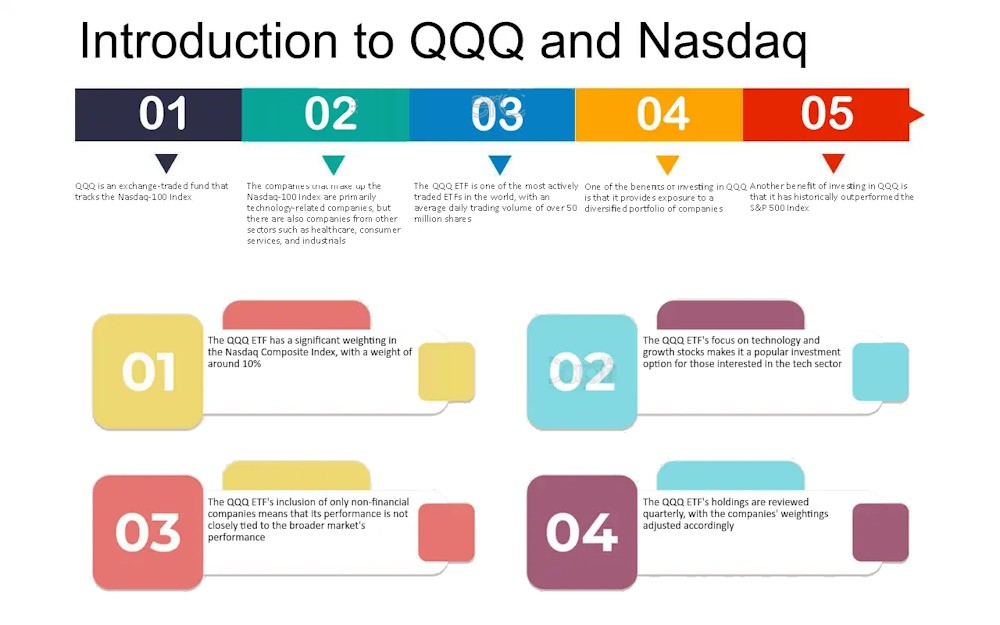The $250 billion QQQ fund turns 25 this year.

The stock market is rising due to the power of technology corporations; the majority of the gains are concentrated in a small number of widely held equities, with Microsoft being the most valued company in the United States.
It is 1999, and on that day the Invesco QQQ Trust exchange-traded fund, or QQQ, was introduced. In several aspects, its debut revolutionized the investing industry. However, 25 years later, some of the same basic issues and market dynamics still confront IT investors.
Once associated with the dot-com boom and bust, the fund has expanded into a $250 billion monster. It is the main instrument utilized by both large and small investors to obtain a wide range of exposure to large tech stocks.
Next month, QQQ, an investment vehicle that makes bets on the top 100 nonfinancial companies listed on the Nasdaq stock exchange, will turn 25. Despite experiencing significant ups and downs during that time, buy-and-hold investors have found success with it: Reinvesting dividends, a $1,000 investment made on the fund’s launch date of March 10, 1999, would have grown to $9,394 by the end of 2023, over double the value of a comparable investment in an S&P 500 tracking fund.
Just like it was in 1999, Microsoft is currently QQQ’s largest position, valued at little over $3 trillion. Both Apple and Amazon.com were investors at the time of debut. Over the previous 25 years, those companies have significantly changed their fundamental industries while continuing to be top achievers on the stock market.
“People tend to overlook the fact that Amazon gained notoriety by attempting to drive Barnes & Noble out of business,” stated Ryan McCormack, a senior ETF strategist at Invesco that focuses on QQQ. “Apple first produced computers, then iPods. Microsoft offered CD-ROM applications for sale.”
Around the height of the dot-com bubble, Nasdaq introduced QQQ. Shortly after the fund’s inception, it burst, causing shares to plummet by over 80% between early 2000 and late 2002. The boom-and-bust aspect of IT investing was highlighted by the fact that investors who made purchases in 1999 and 2000 were underwater on their investment for over ten years.
Despite the fact that few investors believe 2000 will happen again, others claim there are uncanny parallels in the current market. Last year, the Nasdaq-100 surged by 54%. Major stock indices are breaking records as a result of the craze for artificial intelligence and a few large tech stocks.
Beyond safe picks like Nvidia and Microsoft, the AI craze has spread to stocks like Arm Holdings, a U.K. semiconductor manufacturer whose shares shot up over 50% in a single session last week. Bitcoin and other riskier investments are doing quite well. For the first time since late 2021, when almost zero interest rates had investors chasing all manner of speculative assets, the token recently crossed $50,000.
When a small number of large stocks account for the majority of the market’s gains, analysts and investors often become uneasy because they fear a larger decline may be forthcoming if a few companies falter. Although AI is still in its infancy and has little experience, current pricing reflect hopes for significant development and adoption in the field in the years to come.
Nevertheless, QQQ has continuously seen robust inflows despite the highs and lows in the IT sector. As of the close of 2000, Morningstar estimates that QQQ’s assets were close to $24 billion. With over $250 billion as of right now, it ranks fifth among U.S. ETFs, behind four larger stock market funds.
In the decades after QQQ’s introduction, exchange-traded funds (ETFs) have proliferated, enabling investors to purchase and sell hundreds of equities using a single publicly traded share. After introduction, Nasdaq used their QQQ advertising campaign to encourage passive investment, which is essentially following the market. They popularized this approach.
Nowadays, investors take for granted their capacity to swiftly and affordably purchase large baskets of stocks. It was innovative in 1999 to be able to invest in every Nasdaq-100 company at once. No more funds were following the index.
Millions were spent by Nasdaq to promote QQQ, and the fund’s rise contributed to its almost instant success.
As the Nasdaq continued to rise daily, more and more people were inquiring, “How do I get into this? ” John Jacobs, a former Nasdaq executive who spearheaded the QQQ launch, stated, “The Qs was the answer.”
“There was a tech boom, people were learning day trading for the first time, and new businesses were going public left and right. He continued, “QQQ was the poster child for everything that was going on and made ETFs known to regular investors.
Eventually, Nasdaq and PowerShares came to a revenue-sharing and licensing arrangement. PowerShares acquired the fund in 2007, not long after Invesco acquired it.
With a significant ecosystem surrounding it, QQQ is currently Invesco’s largest fund and offers investors long, short, inverse, and leveraged exposure options. In addition, the asset management now provides QQQM, a less expensive variant intended for private investors who don’t need the liquidity that big institutions crave.








